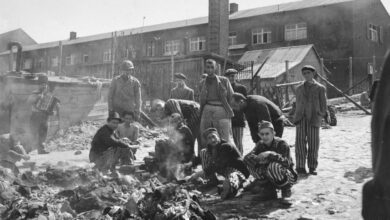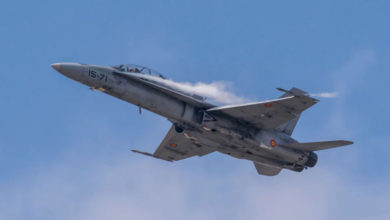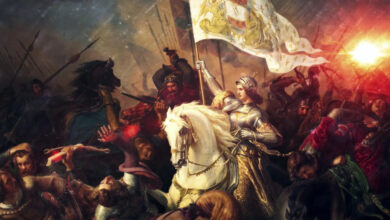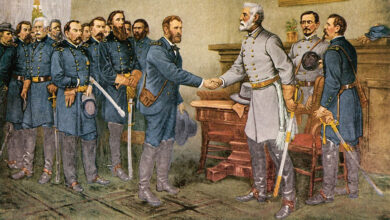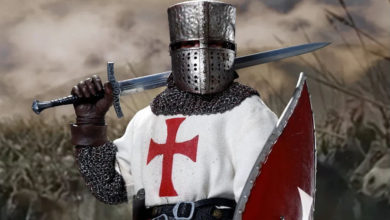
Podcast: Play in new window | Download
Though dark days have dotted all of history, the US Civil War Battle of Antietam, also called the Battle of Sharpsburg, surely ranks as one of the darkest. More Americans died on this day than on any other day in the country’s history.
Taking place over three days from September 16 to September 18, 1862, in Maryland, the battle was bitter and completely inconclusive. The Confederates ended up retreating though the battle itself was technically a draw. Shortly thereafter, on January 1, 1863, President Lincoln issued the Emancipation Proclamation, effectively freeing the slaves though it would take a few more years for the Constitution to be amended and make slave freedom the law of the land.
This battle was the next phase in the Civil War after the Second Battle of Manassas, also known as Bull Run. The Union Army of Virginia was soundly defeated and General Robert E. Lee had come across the Potomac River into Maryland. His goal was to direct the fighting away from the Shenandoah Valley, a crucial supplier of food to the Southern soldiers. The area had earned the nickname “The Breadbasket of the Confederacy”, and as it was September and time for the harvest, Lee was trying to shield a valuable asset.
It was also a diplomatic chess move, trying to curry favour with the nations of Europe for the Confederacy and make Northerners nervous. Maryland had not seceded from the Union though it was a slave state, and the hope was that Marylanders would at least be sympathetic if not willing to join the cause.
Believing the Union army to be in need of regrouping after Bull Run, Lee decided to split his army into several smaller units. He sent Lt. General Stonewall Jackson to Harpers Ferry, and Lt. General James Longstreet on to Sharpsburg. These orders were issued as Order Number 191.
At some point, someone was careless with these orders and used the paper to wrap some cigars. The cigars were subsequently dropped in a field and recovered by the Union Army, specifically the 27th Indiana Regiment. The orders were then forwarded on to Union commander Major General George McClellan, who upon learning of his opponent’s plan, seized the opportunity and headed off to meet the Confederates. McClellan was not the fastest commander, however, and this would become an issue in just a few days.
A Northerner who was sympathetic towards the South found out about the cigars and the discovery of the order and let Lee know that his plan had been intercepted. Thanks to McClellan’s delays, the Confederates were then granted time to move into place, reconnoitre, and prepare.
At South Mountain, outside of Sharpsburg, on September 14 a sub-set of the Union army met the Confederates, while the rest of the Union soldiers were moved over to the east side of Antietam Creek. The Confederates were pushed out of South Mountain, but two days later, six of the nine divisions under Lee were in place, along with 200 pieces of artillery.
In the early hours of 17 September 1862, the Union Army of the Potomac led by McClellan took on Lee’s Confederate Army outside the town of Sharpsburg, Maryland on David Miller’s cornfield. The fighting was so intense the area became known as Bloody Lane. The Union launched the attack and though the Confederates countered the assault, the Union, later in the day managed to punch through the heart of the Confederate lines. They were about to finish off the Southerners at the bridge over Antietam Creek when AP Hill’s troops came over from Harpers Ferry, Virginia.
The replenishment was enough to inspire the Confederates and together they pushed the Union back again. The losses were so great, though, that Lee was stopped before successfully invading a Union state, and he retreated back to Virginia. Initially, Lee was advised to retreat the same day, on the 17th, but he did not believe that McClellan would attack again the next day. However, the battle waged on the next day, with the last encounter happening just south of the Potomac River in Shepherdstown, Virginia, which is currently in West Virginia.
When all was said and done, the Union dispatched 75,300 soldiers to Sharpsburg, and the South had 52,000 soldiers there. When the fighting stopped, over 22,000 men lay dead or wounded, including 12,400 from the Union and 10,300 from the Confederacy. 82 per cent of the 1st Texas Infantry was lost in the battle.
Every available building was turned into a makeshift hospital, including churches, barns, stores, and houses. The diseases brought by these mobile surgical units wreaked havoc on the civilian population as well in the following days.
The only way this could be considered a Union victory is that Lee retreated and McClellan held his ground on Miller’s field. McClellan was subsequently replaced by Lincoln with Major General Ambrose Burnside. Militarily speaking, the battle was a draw. From a human standpoint, it was a devastating loss for both sides.
Podcast: Play in new window | Download

